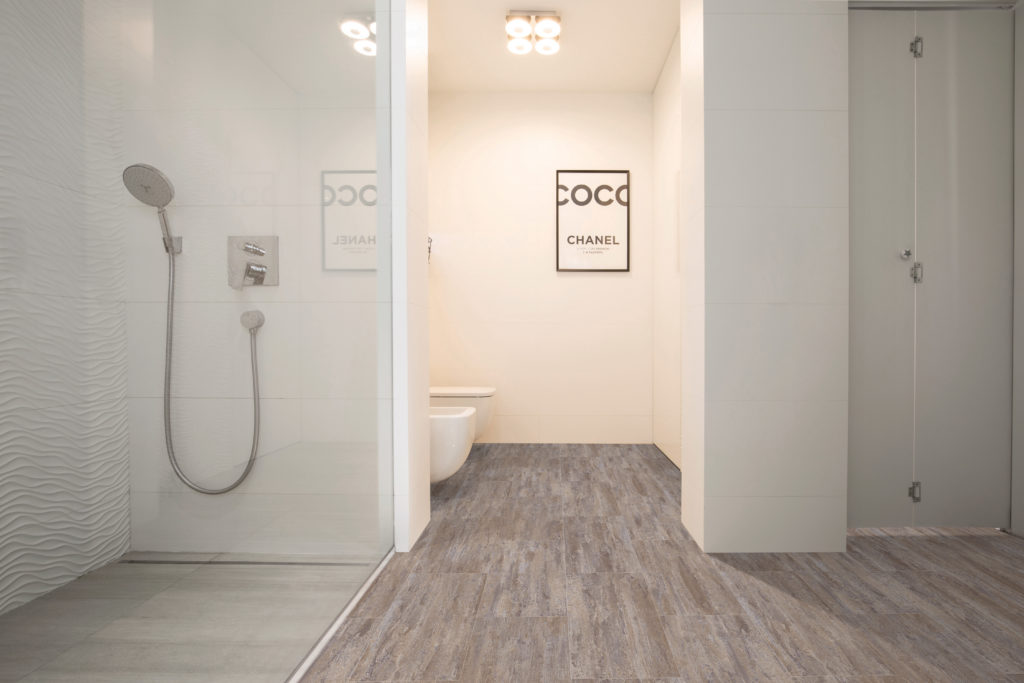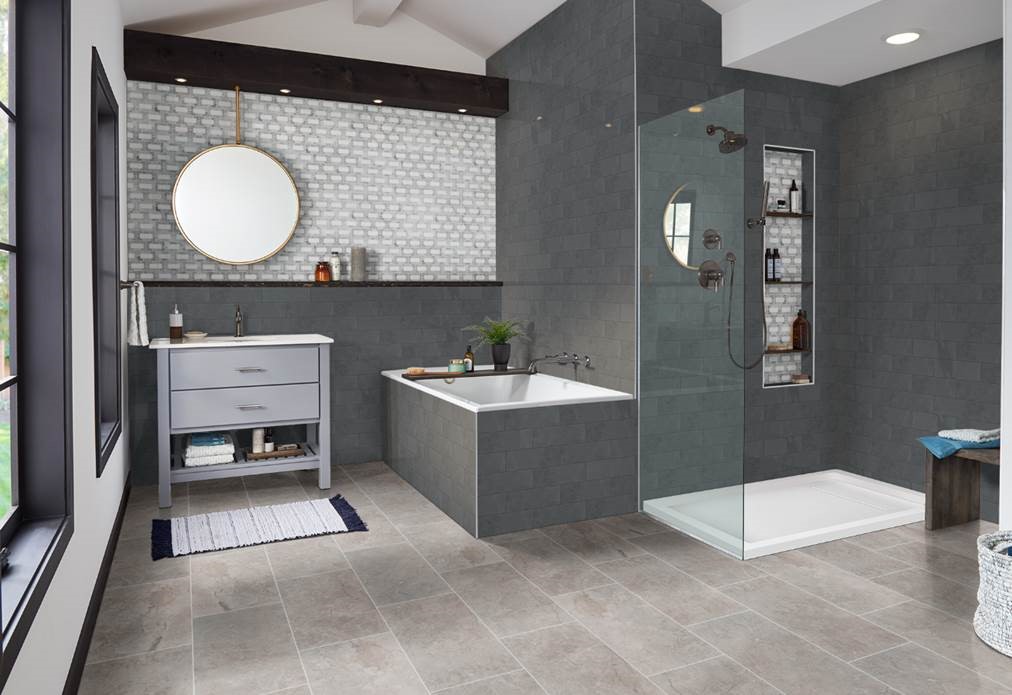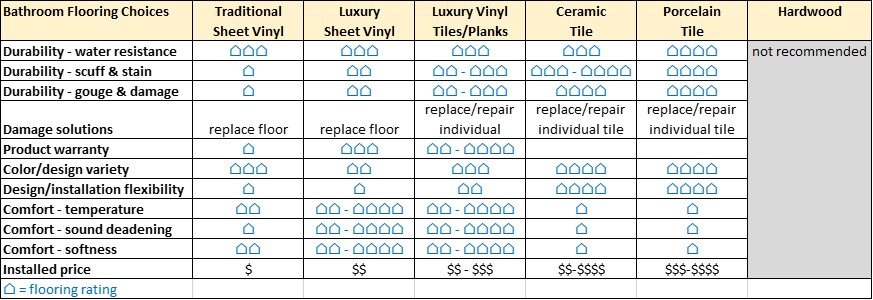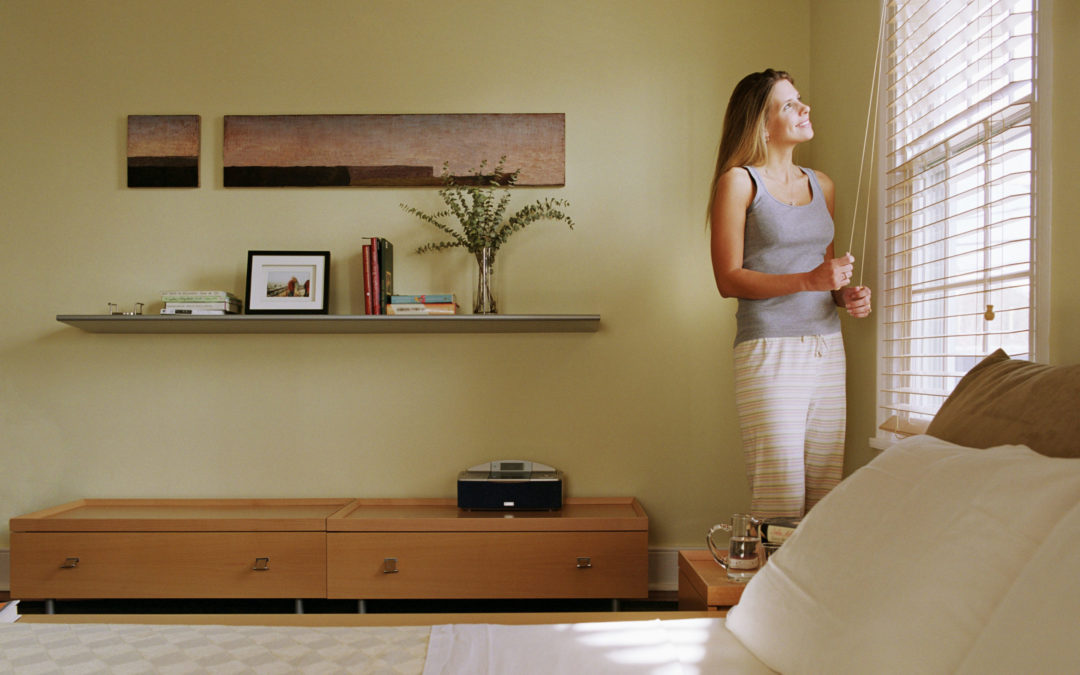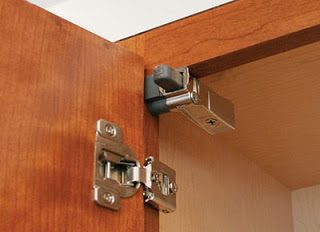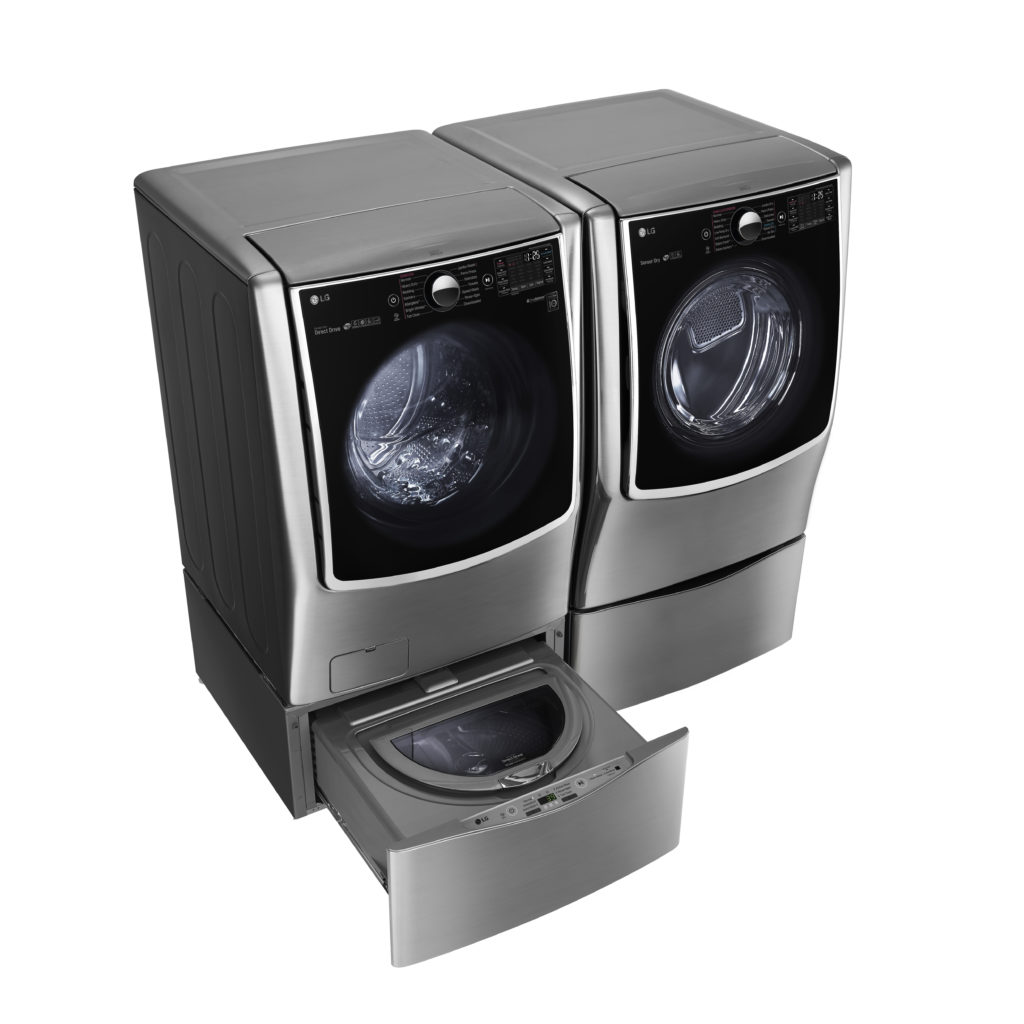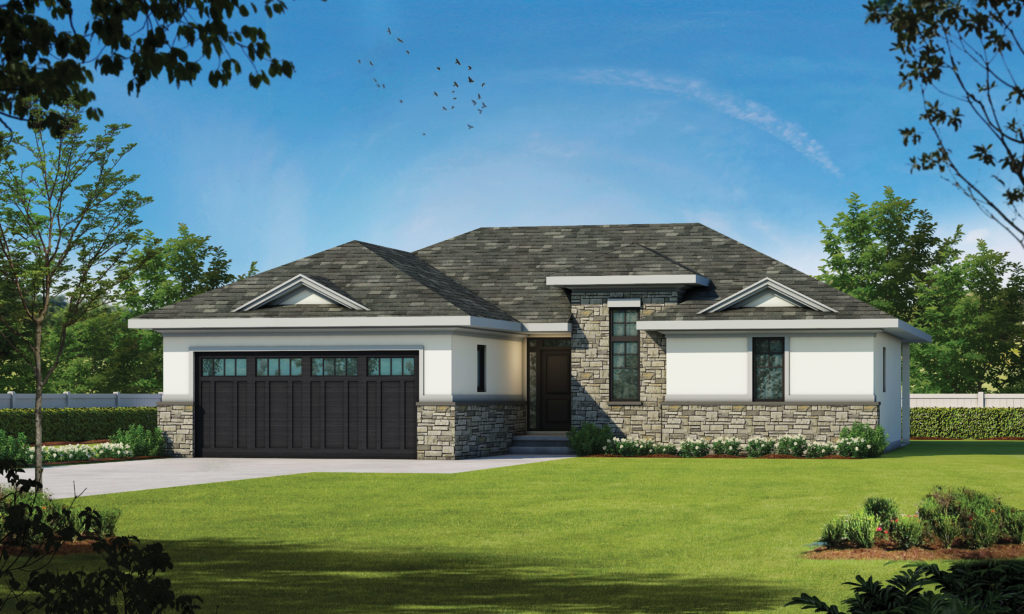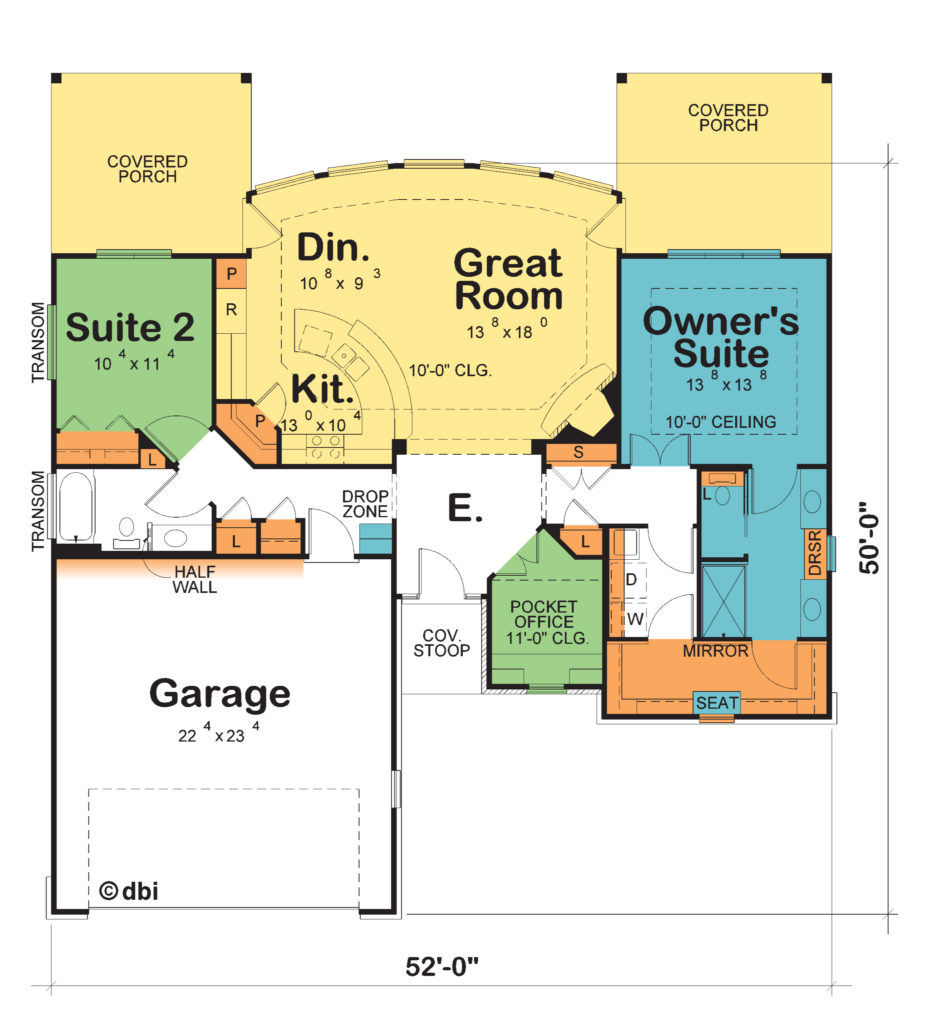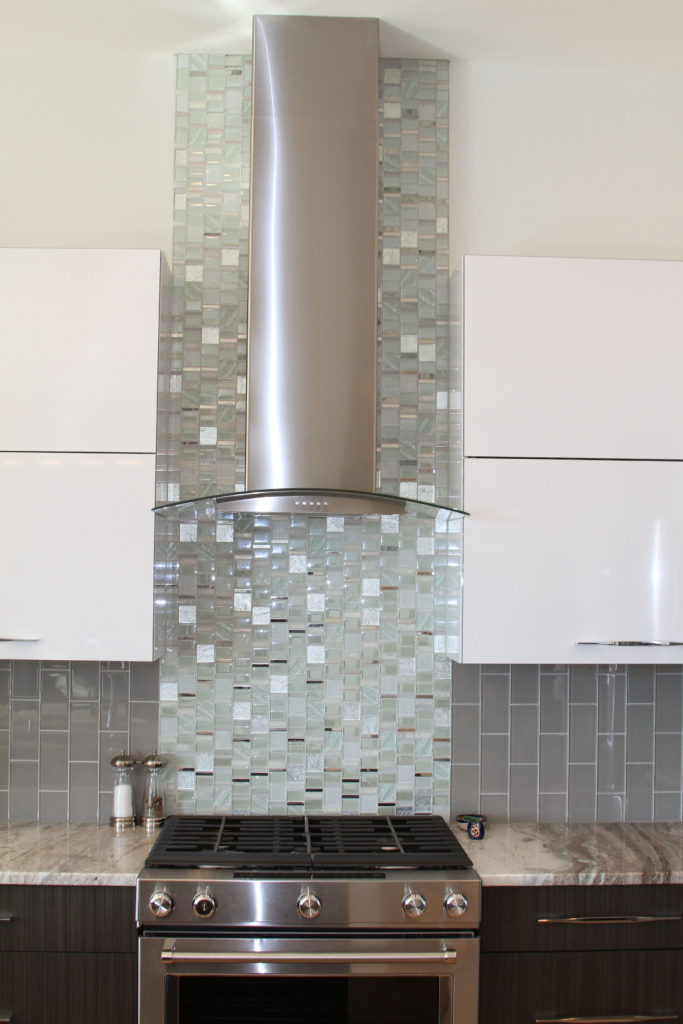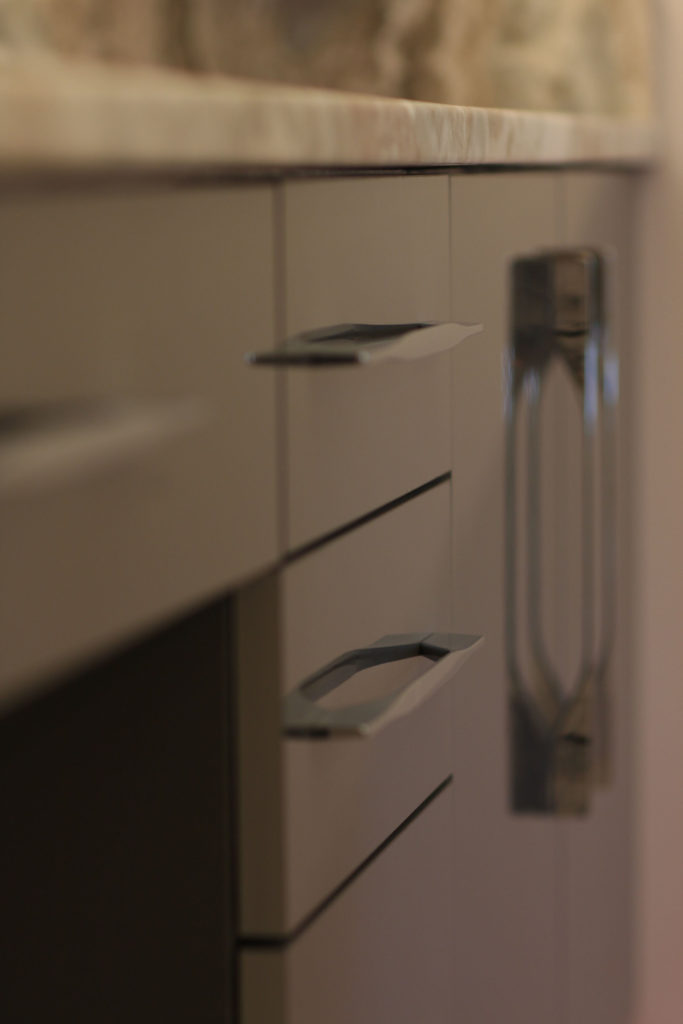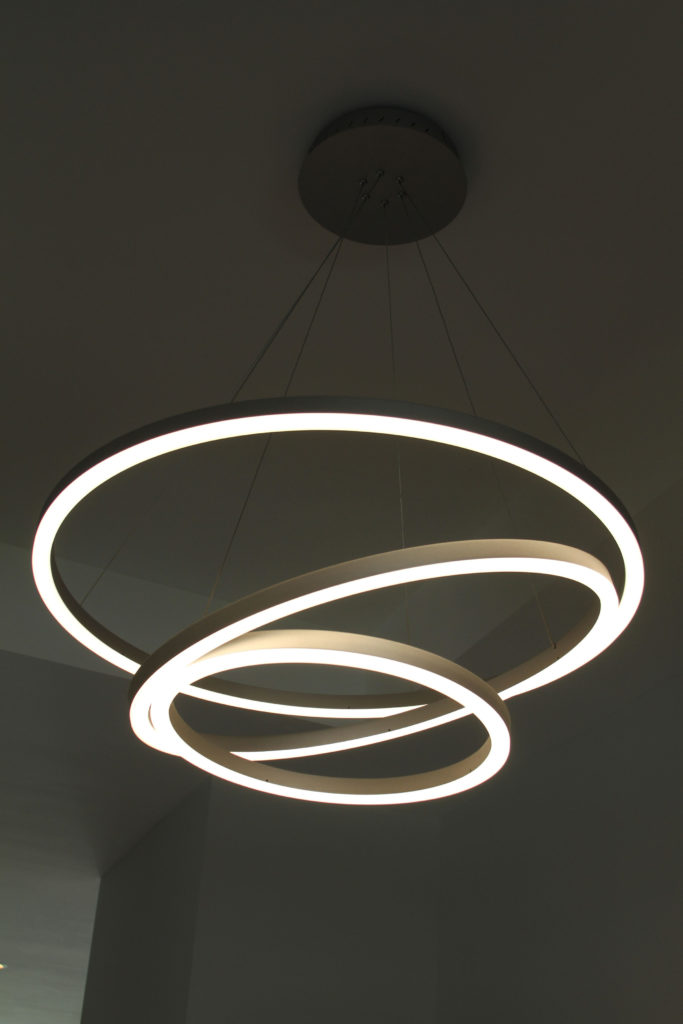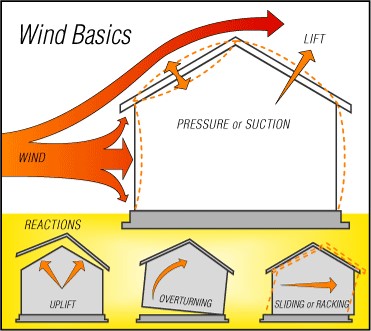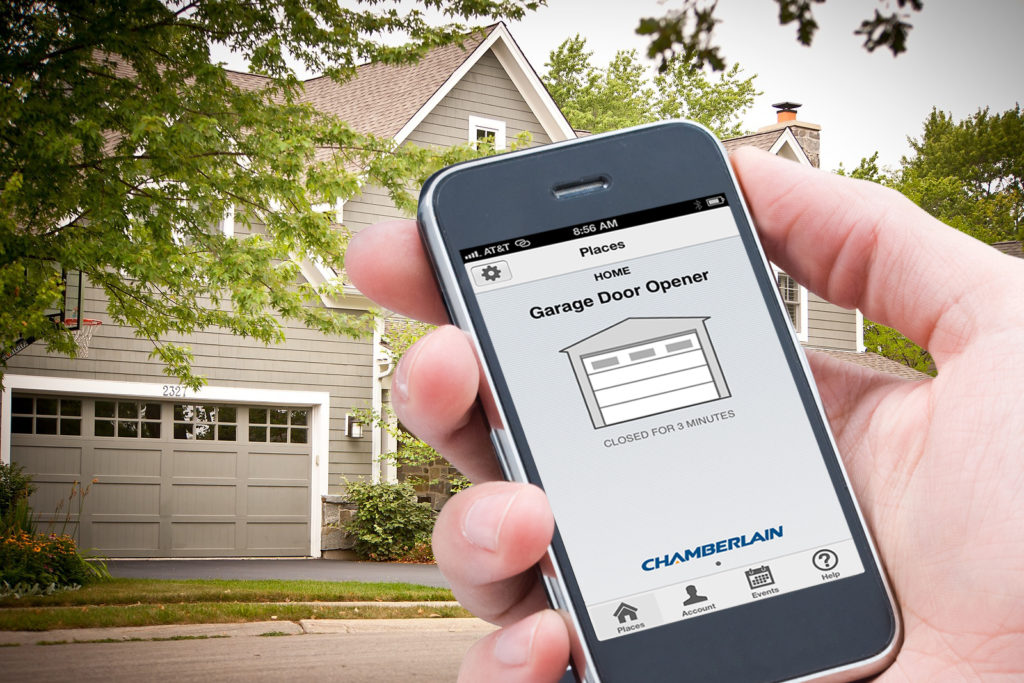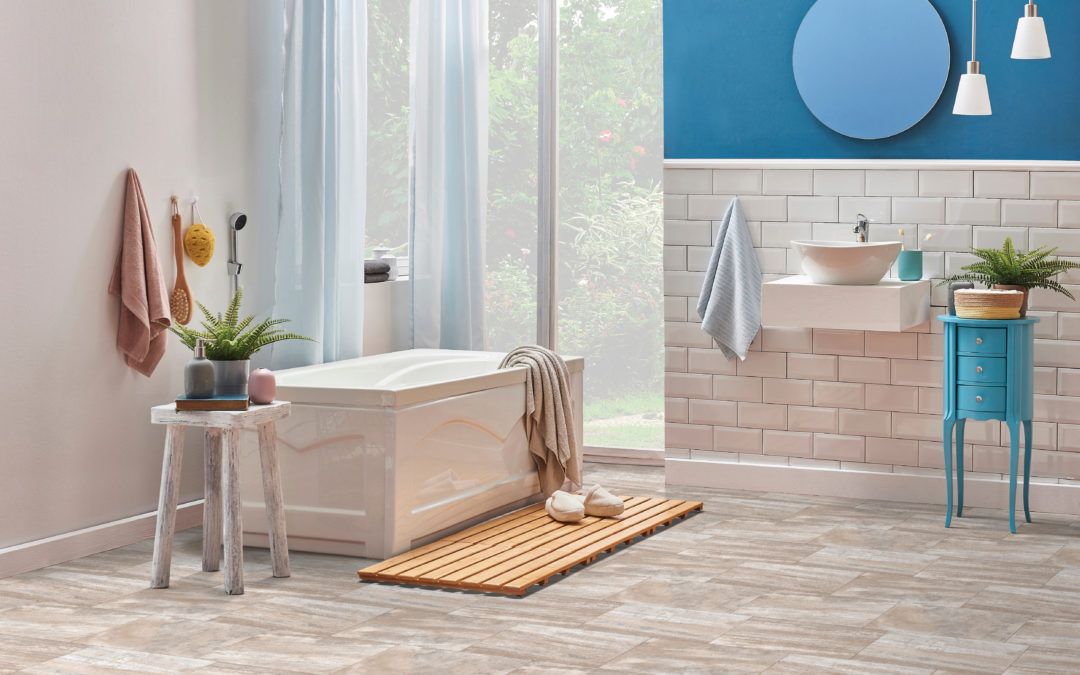
Choosing the Right Flooring for Your Bathroom
Vinyl? Tile? Wood? Laminates? The newer Luxury Vinyl Tile (LVT) or Luxury Vinyl Plank (LVP)? What’s the right choice for your new bathroom? Her Home™ Magazine recently posed that question to Joe Dubsky, Manager for Thornton Flooring (Sioux City, Iowa, branch). Based out of Sioux Falls, South Dakota, Thornton Flooring is one of the Midwest’s largest flooring retailers.
Of today’s popular flooring materials, Dubsky quickly dismissed wood as an option for bathroom flooring due to wood’s inherent problems with getting wet. Both solid hardwood and engineered wood planks will swell and “cup” from water absorption, ruining the floor. Similarly, some laminate manufacturers discourage its use for bathroom flooring due to water intrusion issues.
The remaining choices basically come down to aesthetics, durability, and budget.
Traditional sheet vinyl flooring is available in a wide range of attractive colors and patterns, including replicating natural stone and hardwood. Glued-in-place as one continuous piece, sheet vinyl offers excellent resistance to water damage. Relatively easy-care, sheet vinyl is often the least expensive flooring option, with pricing and durability typically varying depending on the thickness of the material and the thickness of its (top) wear layer. Thicker vinyl flooring, while more expensive, generally offers greater scuff and gouge resistance as well as longer warranties.
Luxury Vinyl Sheet flooring is at the high-end of vinyl roll flooring. It may be twice the thickness of cheaper vinyl flooring, warmer and softer, and more comfortable underfoot as well as significantly quieter. Dubsky likes the Beauflor® Blacktex HD Luxury Vinyl Roll, stating, “It’s much more durable than traditional vinyl sheet flooring, but less than LVP.” Beauflor’s Blacktex HD is backed by a lifetime residential warranty, compared to the more typical 10-year limited residential warranties common to traditional sheet vinyl.
(Photo courtesy: BeauFlor)
LVT/LVP/WPC/SPC has quickly become the choice of builders and home buyers alike. Essentially identical except for appearance (LVT looks like ceramic tile, LVP looks like wood plank), these products offer comfort, excellent performance, and amazing realism. The core material is typically considered waterproof varying from a vinyl plastic, wood plastic composite (WPC), or even a stone composite core (SPC), the latter being harder and better able to handle temperature extremes, which might be important if your bathroom sits atop an unheated garage. Typically, beneath the core is an attached foam pad, contributing to the comfort and warmth, and according to Dubsky, superior sound deadening. The printed layer, atop the core material, is protected by a wear layer that provides a hard scratch-, stain-, and scuff-resistant protective coating, measured in mils. Dubsky advises looking at the wear layer and the overall thickness of the product when considering LV products, “Wear layers are commonly 12 mil to 30 mil. I like to recommend 12-20 mil thick wear layers for homes.”
“Some LVP is smooth, while some is embossed in register, with indentations giving it the feel of natural wood or tile as well as added depth and texture.” Dubsky pointed to a less expensive LVP’s woodgrain and a knot, printed in high definition, which looked exactly like authentic wood planks. Yet its uniform smoothness, especially in that knot area, detracted from the authenticity of actual wood. The embossed in register LVP wherein the feel and texture, particularly in the knot area, was virtually indistinguishable from wood flooring. Dubsky mentioned that the embossed in register LVP was also a bit more slip-resistant, which can be an important factor in bathroom floor choice.
Selecting your flooring for your bathroom can be fun and easy. With today’s technology, many manufacturers offer tools to help you visualize your dreams. Many companies have a room scene visualizer where you can take a photo of your room, select your style and color, and even choose the direction to run your flooring.
As with other vinyl flooring, LVP and LVT prices also tend to vary by thickness of the product. The product has caught on with applications throughout the home, not just in bathrooms. Unlike sheet vinyl’s low-price stigma, for its many practical and aesthetic advantages, LVT and LVP is finding its way into million-dollar homes, often replacing what would have been hardwood and tile floors. Importantly, luxury vinyl planks and tiles, if damaged, can be replaced and sometimes even repaired. In contrast, gouged or otherwise damaged sheet vinyl must be fully replaced.
Ceramic and porcelain tile have long been the go-to choice for custom bathrooms. Both are clay-based, but the clay used in porcelain tile is more dense and more refined. Porcelain tile is also fired at hotter temperatures for a longer period of time, making it harder, more durable, and impervious to water. Due to the materials used and manufacturing process, Dubsky notes, “Porcelain tiles are generally a little more expensive than ceramic, but basically, color dictates most people’s tile selection.” Ceramic is also water-resistant, but more porous than porcelain. While generally a fine choice for bathroom floors, there is a chance of liquid spills staining a ceramic tile, even with the glaze.
Porcelain or ceramic, most tiles are printed with what is essentially a high definition ink-jet process; then the glazing, where an enamel or liquid glass top coating is applied. That glaze protects the tile and its printed surface and may be either a gloss (shiny) or matte (dull) finish. Some tiles also have a slip-resistant texture, which can be especially important for the elderly. Often tile-floor bathrooms also feature tile shower and tub surrounds as well as tile wall accents. Dubsky has found that one porcelain importer (Happy Floors) offers porcelain tile that matches up well to their LVT products, so his customers can enjoy the benefits of both products in their bathroom.
“Tile has stood the test of time,” Dubsky said, “but it is at the high-end of bathroom flooring choices.” One other drawback is that tile floors can feel quite cold to walk on. For that reason, he often installs Schluter® Systems in-floor electric heating underneath tile bathroom floors. In-floor heating can be surprisingly inexpensive when done at the time of construction.
So, what is the right choice of flooring for your bathroom? Check out MSI's BathRoom Visualizer Tool - visualize backsplash, wall tile, and floor tile options. Use this quick tool to mix and match your choice of colors to visualize the ideal bathroom. With a simple click—email, print, or save your favorites to help in making final selections. (Photo courtesy: MSI)
Again, it comes down to the look and performance you want, and price considerations. The following chart may help guide your decision.
For more resources on thoughtful design:
- Visit our blog
- Browse our Her Home™ Magazine
- Thoughtful Design Concepts
Cover photo: BeauFlor

